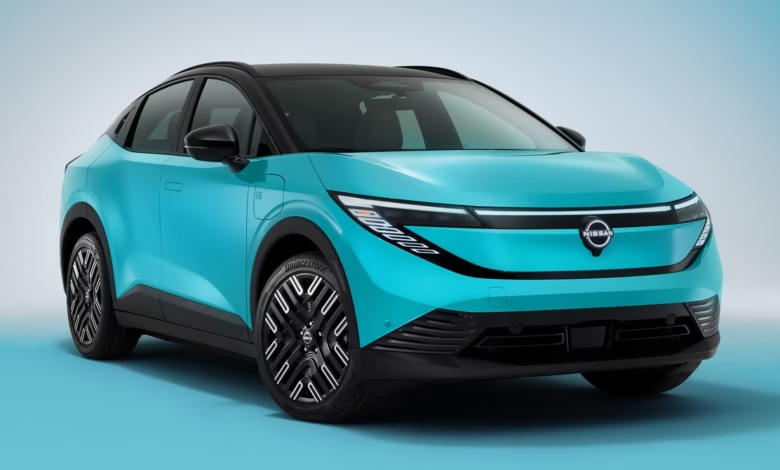Nissan Leaf Returns Stronger to Regain Market Share

▼ Summary
– The 2026 Nissan Leaf transitions from a compact hatchback to a compact SUV/crossover, reflecting market trends toward utility vehicles.
– It offers up to 303 miles of range with a 75-kWh battery and a 214-hp front-wheel-drive motor, but lacks all-wheel drive.
– The Leaf supports 150 kW fast charging via a NACS port, achieving 10-80% charge in 35 minutes, and features Plug & Charge for seamless billing.
– Design improvements include a sleeker profile (drag coefficient of 0.26), powered front door handles, and a spacious cargo area (55.5 cu ft).
– The interior features dual 14.3-inch displays, Google integration, and optional upgrades like a panoramic moonroof and battery heater.
The 2026 Nissan Leaf makes a bold comeback, transforming from a compact hatchback into a sleek crossover SUV while delivering impressive electric performance. This next-generation model marks a significant evolution for Nissan’s pioneering EV, now equipped with modern features and improved efficiency to compete in today’s crowded electric vehicle market.
Under the hood, or rather, beneath the floor, the new Leaf packs a 75-kWh battery capable of delivering up to 303 miles on a single charge, a substantial upgrade from its predecessor. Power comes from a 214-horsepower electric motor driving the front wheels, generating 261 lb-ft of torque for responsive acceleration. While all-wheel drive isn’t available, the Leaf compensates with 150-kW fast-charging via the North American Charging Standard (NACS) port, allowing a 10-80% charge in just 35 minutes under optimal conditions. Convenience is further enhanced by Plug & Charge functionality, streamlining the charging process at compatible stations.
Visually, the Leaf takes cues from Nissan’s Ariya, though with a more aerodynamic profile boasting a drag coefficient of 0.26, lower than both the previous Leaf and the Ariya. Design enhancements include flush-mounted front door handles and a high rear tailgate, maximizing cargo space to 55.5 cubic feet when the rear seats are folded. Buyers can choose between 18-inch or 19-inch wheels, with the smaller option likely offering slightly better range efficiency.
Inside, the cabin embraces a dual 14.3-inch display setup, integrating Google Maps and Google Assistant for seamless navigation and voice control. Android Auto and Apple CarPlay remain available, along with optional upgrades like a panoramic moonroof and a battery pre-conditioning system to maintain optimal performance in cold weather.
Nissan also plans to introduce a more affordable Leaf S trim post-launch, featuring a 52-kWh battery and a 174-hp motor, though exact range figures haven’t been disclosed.
The Leaf’s legacy is undeniable, it was one of the first mass-market EVs in the U.S., debuting alongside the Tesla Roadster and Chevrolet Volt in 2010. While its polarizing design initially drew mixed reactions, the new model sheds its quirky past for a more mainstream, tech-forward approach. With improved range, faster charging, and a crossover-friendly silhouette, the 2026 Leaf aims to reclaim its position as a leader in affordable electric mobility.
(Source: Wired)
